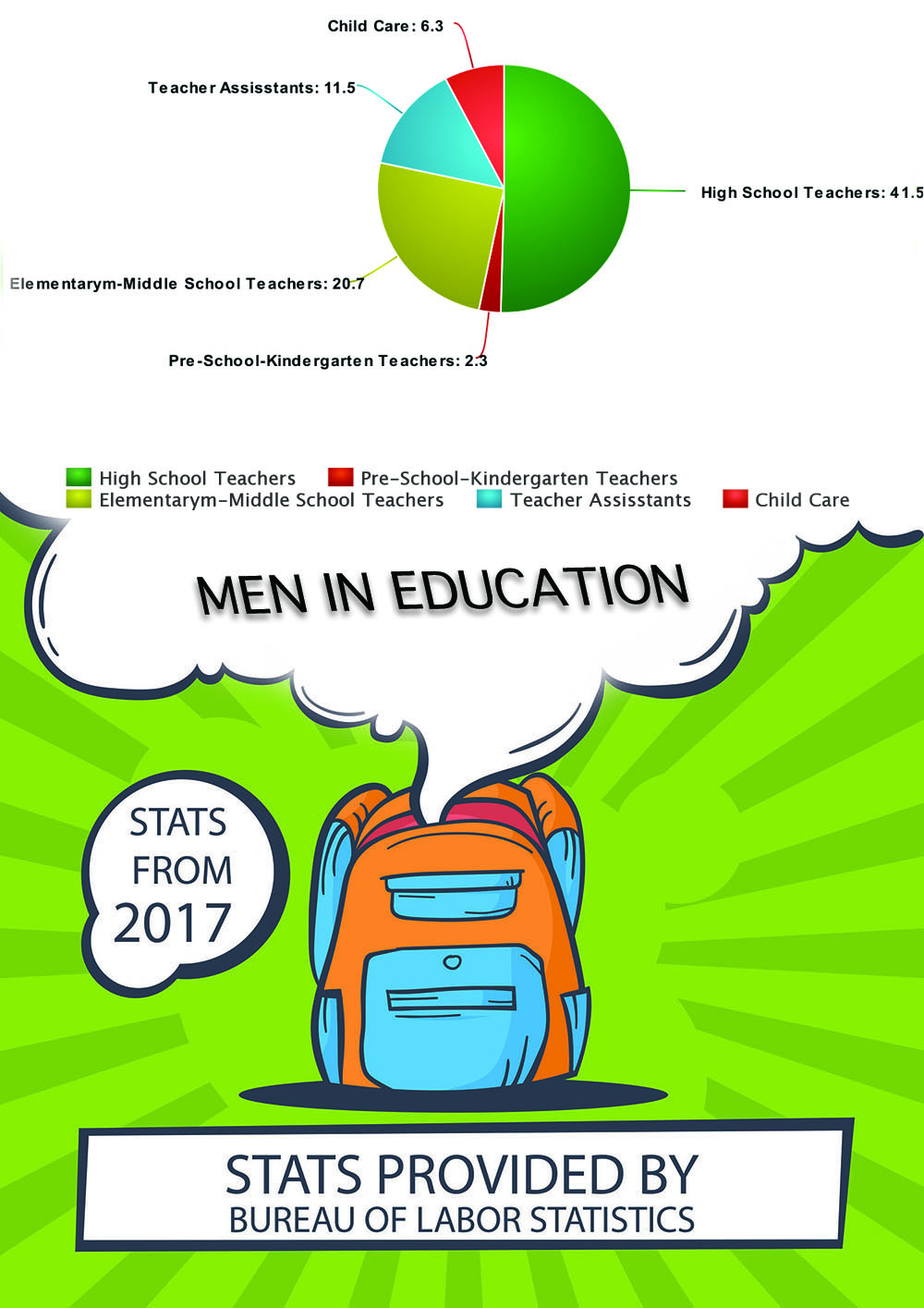
Studies suggest shortage of men in education field

At the University Of Houston-Clear Lake (UHCL), you can walk into most classrooms and see a pretty even distribution of both male and female students present. However, walk into any College of Education class and you will find large numbers of one sex – female. Studies show a lack of male interest in teaching grades K-12.
Based on the UHCL Office of Institutional Effectiveness statistics from fall 2017, of the 1,011 students enrolled in the College of Education undergraduate programs, 951 were women and 60 were men. This disparity is not an anomaly, past semesters show a trend for female students to outnumber male students approximately 15 to 1 in education majors for grades K-12.
These numbers are consistent with what’s happening in the teaching profession throughout the United States. The National Education Association (NEA) report “Rankings of the States 2017 and Estimates of School Statistics 2018,” indicates that in 2017, a little more than three-fourths of the teachers in U.S. public schools were women.
This trend is even more obvious in the lower grade levels, especially in elementary school. MenTeach, an organization whose mission is to increase the number of males in education, reported on its website that in 2017 about 2 percent of kindergarten and preschool teachers were male.
“In elementary-middle school, it’s about 20 percent men, and for secondary and high school it’s about 41 percent men,” said Bryan Nelson, director of MenTeach.
These statistics, also found on MenTeach website, puts into question the reason why men are straying away from teaching in elementary and middle schools. Bryan Nelson narrowed it down to three main reasons why men are not present in the elementary-middle school education classrooms.
“There are three main reasons why men don’t enter or don’t stay in the field,” Nelson said. “The first reason is stereotypes. So people, most people, would feel more comfortable with a woman and some assume men can’t do it. The second reason is hearing false accusations. They are afraid that men are going to harm children, so men are like ‘I don’t want that threat, I don’t want that danger.’ Interesting enough, children are safer in schools than they are at home. The people who harm children the most are people they know in the home.”
Nelson said the third reason has to do with “low status, low pay.”
“Let me put it this way,” Nelson said. “If someone’s dating and they go out to a bar or something and someone asks what do you do for a living? Now if someone says I’m a doctor or a lawyer… or a high paid job, how do people respond? They are like, ‘Woah, okay!’ But if you say I am a teacher, I teach children. It just does not have the same cache.”
Payscale reports on its website that elementary school teachers make on average $44,288. Middle school teachers make on average $46,528 and high school teachers make $48,541. Adding coaching to a teaching job can include a pay raise depending on the sport, position and school.
Brad Smithey, Freeport High School teacher and football coach, said he thinks the lack of men in education has to do with perception.
“I think because education seems to be more women-oriented now, people are growing up and looking at teaching as not a masculine profession,” Smithey said. “Also, the pay is not very high compared to some other career opportunities that seem more ‘manly.’”
Coaching tends to be a theme in why men gravitate toward a teaching profession.
“I know from my experience that if it were not for coaching, I’m not sure I would have gotten into education,” said Seth Harris, tenth-grade teacher and coach at Friendswood High School. “I think some, like myself, discover they enjoy teaching after being drawn in by just coaching, but I think if not for coaching the profession would draw less men out of college.”
Dan Kornelis, an elementary school teacher at David G. Burnet Elementary, belongs to the small percentage of men who chose to teach younger students.
“I chose elementary because of their natural curiosity,” Kornelis said. “Men seem to go into education to teach high school or to coach or go into administration. Why? Could be the pay, could be the status. My advice is to go with what you want to teach, not what others say you should. And ultimately be an advocate for all children.”
Nelson explained although men in education are still showing low numbers, there has been a start towards a more positive trend.
“Right now we are on an upward trend, childcare teacher assistants went above 6 percent for the first time in history,” Nelson said. “It just amazes me that the numbers are increasing. Some of this is from the past years’ trends, the great recession and more men in the military going into education due to the G.I. bill.”
Nelson believes an increase in teaching salaries would enhance the trend of more men teaching younger students. This trend could increase the number of men entering this career field because people tend to go where the money is. Nelson points out the state with the highest teacher salary also had a higher percentage of male teachers in schools.
“If you asked me what I want our schools to look like, well I would want our schools to have the most modern equipment, but I also want the teachers to look like the world we live in, which is half men and half women,” Nelson said.
